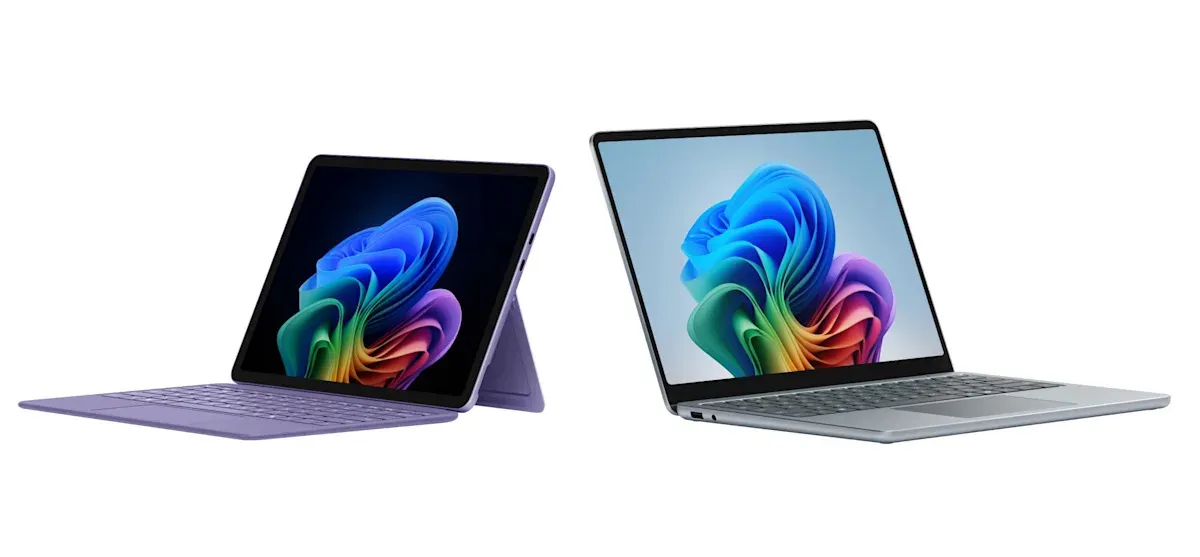
Last year marked a significant milestone for Microsoft's Surface lineup, highlighted by the introduction of the innovative Copilot+ AI PC initiative and the launch of impressive Arm-powered Surface Pro and Surface Laptop models. While the 2022 releases featured advancements like OLED screens and Qualcomm's latest Snapdragon chips, the overall design of these Surface machines remained relatively unchanged. However, 2023 brings exciting updates as Microsoft announces its new compact versions: a 12-inch Surface Pro hybrid tablet and a 13-inch Surface Laptop.
These new devices are not intended to replace existing models; instead, they serve as compact siblings to the current lineup. Although the new 12-inch Surface Pro and 13-inch Surface Laptop appear only slightly smaller than the existing 13-inch Surface Pro and 13.8-inch Surface Laptop, Microsoft has successfully reduced their weight significantly. The new 12-inch Surface Pro is a mere 1.5 pounds, making it half a pound lighter than its 13-inch counterpart, while the revised Surface Laptop weighs 2.7 pounds, which is 0.3 pounds lighter than the previous model.
Notably, the new Surface Pro is also 0.2 pounds lighter than the Surface Pro X, a device that received acclaim for its stunning hardware yet suffered from poor Windows Arm support in 2019. Both new Surface devices are equipped with an eight-core version of the Snapdragon X Plus chip, which includes a 45 TOPS NPU and an Adreno GPU, alongside 16GB of RAM. For storage, options include either 256GB or 512GB of UFS (Universal Flash Storage), but unlike SSDs found in other Surface devices, this storage cannot be upgraded in the future.
While the compact form factor is appealing, the smaller screens of both devices represent a notable downgrade compared to their larger siblings. The 12-inch Surface Pro features an LCD display with a resolution of 2,196 by 1,464, which is only marginally better than 1080p, and supports a maximum refresh rate of 90Hz. In contrast, the larger 13-inch Surface Pro boasts a more impressive resolution of 2,880 by 1,920, with a 120Hz refresh rate and an optional OLED upgrade for enhanced visuals.
The 13-inch Surface Laptop, on the other hand, offers a standard 1080p 60Hz LCD, while its larger sibling has a sharper 2,304 by 1,536 LCD capable of reaching 120Hz. Additionally, Microsoft has made the decision to abandon the Surface Connect port in favor of relying solely on USB-C charging. Both the Surface Pro and Surface Laptop come equipped with two USB-C/USB 3.2 ports, supporting fast charging at 45W and 60W, respectively. However, it's worth noting that the Surface Pro does not include a USB power adapter, whereas the Surface Laptop comes with a 45W charger.
Pricing for the new devices varies: the 12-inch Surface Pro starts at $800, which is $200 less than the retail price of the 13-inch model. Curiously, the 13-inch version is currently on sale for $800 as well. As with previous Surface devices, the Surface Keyboard is sold separately, adding $149 to the cost of the Surface Pro. Microsoft claims to have reimagined the Surface Keyboard for the 12-inch tablet, promising a different typing experience this time around. The 13-inch Surface Laptop begins at $900, but similarly, the larger model is also available for $800, down from $1,000.
Microsoft seems to be banking on the appeal of these new compact devices, enticing users with their lighter weight and portability. As we await further reviews, the question remains: will the spec downgrades of these new Surface devices be justified by their enhanced portability? Only time will tell as we put both machines to the test.